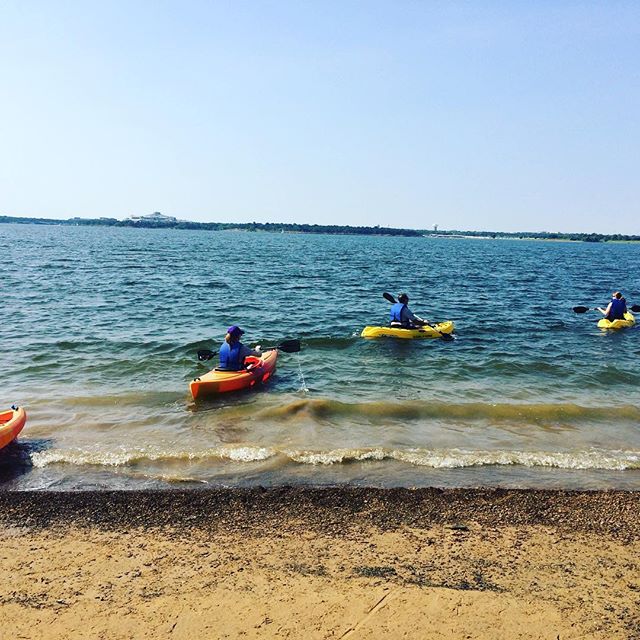Hello and Welcome!
Water Safety is an essential part of becoming an avid kayaker. Since kayakers can virtually paddle in almost any body of water (depending on their skill levels) this creates an opportunity to learn more about the many risks that can be involved. Whether you are paddling in whitewater, ocean currents, lakes, streams, rivers or seas, each body of water represents its own unique sets of dangers. We have outlined ways to practice safe boating techniques to help in preventing accidents when presented in a dangerous situation.
First and foremost, if you get nothing else from this information, always wear a life jacket no matter how good of a swimmer you are (or think you are). We hope the information will shed some light on the potential dangers that are out there. Having fun is important, but being safe will allow to tell others about it.
(Grapevine Lake,TX)
10 Basic Water Safety Rules:
- Check the Weather. Never depart onto the water if there is a storm approaching. It could get stronger than anticipated.
- Respect the Water. If even the most professional outdoor enthusiasts practice this, so can you.
- ALWAYS Wear a Life Jacket. Unpredictability on the water can put you in a position where having a life jacket on could save your life.
- Create a Float Plan. Let others know where and when you will be. Check in if possible.
- Know Your Limits. Don’t try and tackle water that you are unfamiliar with.
- Stay “Help Minded” If you see another boater in distress. Always be sure you are safe and call for assistance before trying to help others.
- Carry a Whistle for emergency situations. The sound of a whistle can travel far distances. It is good to carry a good one such as a Fox40 Classic.
- Allow the Right-Of-Way for bigger and faster vessels. Never assume they will stop for you.
- Stay Observant of potential dangerous wildlife and avoid areas with this type of wildlife if possible.
- Know the Water. Study and scout (observe) rapids, currents, storm patterns, and other geographical data before departing out.
Here are some kayak industry leaders that have established the proper safety protocol to follow when it comes to practicing safety on the water.
US Coast Guard Boater Safety Tips:
https://www.uscgboating.org/recreational-boaters/
American Canoe Association Kayak Safety Tips:

